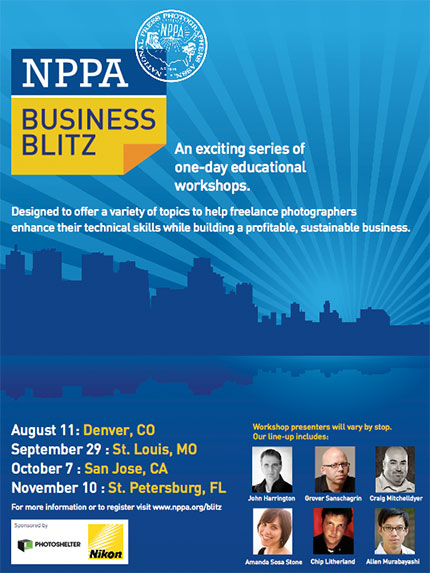
A lot of people ask me questions like: Why did you decide to get out of the military? Now that you've made the transition, what do you think of your MBA experience? What about your private sector career path? How do you compare a military career to one that an MBA and a private sector career may offer?
The purpose of this article is quite ambitious... to provide some insights onto the last question: comparing a top military career to a high trajectory civilian one.
All of the questions I listed have complicated answers and are really separate from each other, despite having a similar theme. Among my peer group, people generally got out of the military for the following reasons:
- Frustration with lack of meritocracy and lack of control over one's own career
- The inability of the military to match job positions that actually make use of one's individual skills and desires
- Being required to work for weak superiors
- General frustration with unnecessary bureaucracy
Certainly some people got out for opportunities to make more money and not have to deploy away from one's family, but those were much less influential decision factors, at least among my peers. After all, low pay and deployments was something we knew we were signing up for. The list I put forward above however, were not, and what's worse, are largely self-inflicted by the military.
A much more comprehensive study on why some of the best military officers leave the service was conducted by a friend of mine at the Harvard Kennedy School and is
available for download. It revealed that many military officers believed that top officers would stay in the service if the best officers got the best assignments, were promoted faster, had more opportunities for professional development (such as graduate school), and received pay for performance instead of time-in-service. This is a list that the private sector is fairly good at accommodating, which is why I believe so many leave for the private sector, not because of absolute pay levels or deployments.
Top performing officers who decide to stay in despite these challenges do so because of an unbelievable devotion to duty and to their troops, despite the realization that they could likely contribute in many more ways to the world by untapping their potential in the private sector. This type of leader who decides to stay in the military is rare, but fortunately there are some who do. Many don't however, and that perpetuates the cycle.
Comparing a top military career and a top civilian post-MBA careerSo now let me get to the original question I am trying to address: comparing military and top MBA civilian careers. For the purpose of this comparison, let's make the following assumptions about the individual we are applying this to:
- If he/she stays in the military, he/she will be a top performer and is on track to achieve the pinnacle of all military positions as a field grade officer.
- If he/she gets out of the military, he/she will go to a top business school and enter a high trajectory civilian business career.
So before we begin to "compare" the military and a top post-MBA career trajectory, we have to first agree on what exactly we are comparing. We can compare all sorts of things, such as job satisfaction and financial compensation. We already know that for financial compensation, the military loses, so that is not a very insightful exercise. But what about job satisfaction? That is extremely difficult to measure in such broad context, and people will certainly disagree about how to measure job satisfaction.
So for my analysis, I decided to use a rough proxy for job satisfaction: responsibility. Responsibility is something which, though not a perfect proxy, can be more easily measured (how many people do you command? How many jobs do you influence? How much money do you manage? How much impact do you have on those you manage/command?). I also believe that for the go-getter personality I am conducting the analysis with in mind, he is highly motivated by the impact he can make in his life, and therefore responsibility is high on that list which drives job and overall life satisfaction. This does ignore other things like work-life balance, but we have to start somewhere in answering the question.
As I began to think of how I could explain my thoughts on the subject to somebody who is even outside of the military, I realized how complicated it would be, and decided to capture the essence in one graphic, which is posted below.

An explanation of some of what you see:
- Job responsibility in the military is highly erratic. People who leave company command may wait in some cases 10 years before getting close to the level of responsibility they had before, even if they are the best performers in the entire military.
- Job responsibility in the military, given the assumption of a highly successful career, while fluctuating, is still much more predictable than the private sector. The blue military line is fairly predictable until one hits 22+ years of service, whereas the private sector career begins to significantly diverge and be much more unpredictable within a few years after business school. The dotted lines in both cases represent the upper and lower limits of, say, 90% of the target audience.
- Both the military (blue) and civilian (black) lines lead to similar highs and lows (in terms of responsibility) at the end of one's career. Whether one is running an entire military branch of service, or overseeing a company that employes 400,000 people and drives global innovation, both have very very high levels of responsibility.
What else can we see from this graph? We can clearly understand why people get out of the military when they do; either after their initial 4-5 year commitment or after approximately 8 years. Once somebody makes the commitment to go past 10 years, it doesn't make as much sense to leave at say, 12, 14, or 15, especially given guaranteed pension at 20 years:
 Career Abyss: Losing responsibility with time
Career Abyss: Losing responsibility with timeAnother surprise that most civilians have when seeing this graph is the concept of diminished responsibility for significant amounts of time in one's career despite peak performance and output. For example, a Lieutenant who is done with his platoon leader/command time, may have to wait another 3-4 years before being in a position of greater responsibility. If an officer is a Company Commander deployed overseas in his 7th year in the military, it can be argued that he will not have that same level of responsibility until he is a Battalion Commander, or at least an XO or S-3, which will be at least 6-8 years no matter what. However, if somebody leaves the military after Company Command, he will have to actually take a step down in responsibility post-MBA, and many will also have to wait another 6-8 years before being back at a similarly high level of responsibility. The transaction cost of leaving the military and starting an entirely new career can therefore be very daunting.
Another consideration, is that if that same officer is not deployed while in his Battalion level positions, it's
possible that an officer will never again have as much truly impactful responsibility as when he was deployed as a Captain leading a company, even if he stayed and performed at the top of his abilities for another 30 years. These concepts are foreign to civilian counterparts, which typically expect a gradual accumulation of responsibility through one's career, though the idea is probably at least subconsciously understood my most military officers.
Another consequence reflected in this graph is the divergence of professional progress in the civilian sector versus the predictable and limited growth path afforded in the military. In other words, in the civilian career, one's path has a lot of flexibility associated with it, and to a much larger extent, is driven by one's performance and goals:
 Aligning incentives
Aligning incentivesSo people who will tend to ride along the upper red line have incentive to get out of the military, while people who will ride closer to the lower red line, have some incentive to stay in the military. This creates a perverse environment encouraging the best officers in the military to get out, as highlighted in the
Kennedy School study. That is not to say that many top officers don't stay in the military, but those who do generally do so knowing that they sacrifice many career opportunities... though when it comes to the honor of leading troops, this can't fairly be compared.
In Summary- Military careers have extreme peaks and lows
- Military officers have very little to no control when they can serve in the peaks, and are subject to some very long periods of lows
- For some, the peaks make an entire career worth it
- For others, they see potential to perform at a higher level when unbound from the bureaucratic, time-based promotion system of the military.
Some may trade the responsibility of managing 100,000 people in a private sector career for the honor of leading 12 in combat in the military. Unfortunately, the latter can only be done for a relatively very short time out of a long military career. Furthermore, in the private sector, one can rise in responsibility and contribute roughly proportional to one's performance and capability, which is not generally possible in the military (whether justified or not), therefore driving many top performers out.
There are many tradeoffs with both careers, and one can do a lot of good in both. The ideas in this article are well understood by many junior and mid-grade officers in the military (though I'm sure some would add a very different perspective). Some decide to stay in and some decide to get out... much of it depends on one's personality and priorities. It is important for junior officers however to understand some of these dynamics as they ask themselves the key question of whether or not they will stay in the military for a career or not.
Disclaimer: One things that is difficult to capture in this article is the different type of responsibility one can have in the military versus the private sector. For example, if a young team member is responsible for 4 lives in combat, that is certainly more responsibility than a manger who oversees 4 people in a shop. But how does that compare to a manger that is responsible for 500 employees working in a factory? What about 5,000? Or 50,000? Or a business person who makes decisions that affects billions of dollars in capital, and the livelihood and income of potentially thousands of people? In short, it's difficult to compare and different people will have very different views... but instead of not going through the exercise at all, I made some general assumptions and presented one point of view.












